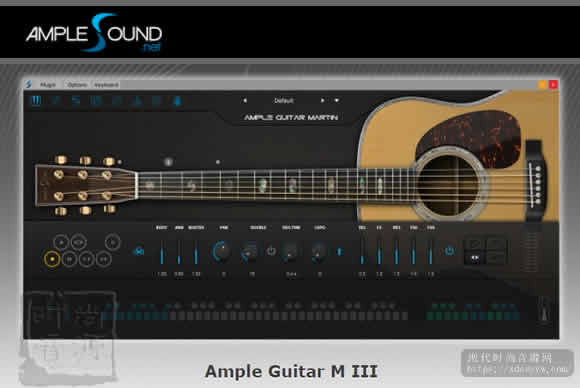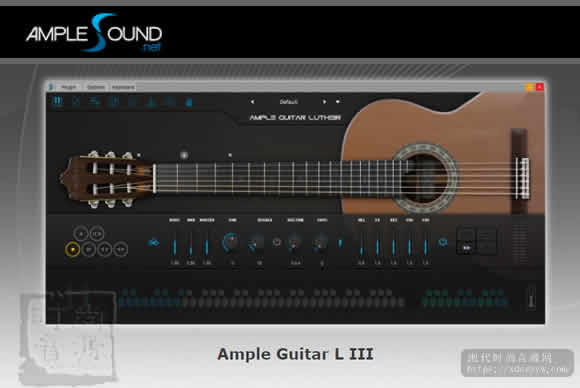![图片[1]-Samplecraze Using Modulation To Shape a Delay Effect’s Filters [TUTORiAL] | 音色插件资源网-音色插件资源网](https://www.yinsebar.com/wp-content/uploads/2021/01/image-156.png)
奇妙 2020年10月25日| 126兆字节
有关如何使用具有延迟效果的源和目标调制器来创建空间音景的详细教程。
一个视频教程,使用调制来成形延迟效果的滤波器,解释了什么是调制器以及如何使用它们来调制插件上的各种参数。
声音设计师已经使用调制器多年了。既包含源调制器又包含目标调制器的调制矩阵是进行所有时髦编程以成形声音的地方。如今,音乐制作人使用调制器来控制和塑造声音,动态和效果。
在让我们发挥调制效果(在这种情况下为延迟效果)之前,我们需要了解调制器是什么。
什么是调制器
调制器是控制另一个设备参数的设备。调制器称为源,被调制的设备称为目的地。源调制器的一个简单好例子是键盘上的音高轮,在这种情况下,目标是音高。换句话说,音高轮在移动时会改变正在播放的声音的音高。
几乎任何东西都可以成为源调制器。大多数合成器键盘都有一个专用的modwheel(调制轮),可以将其分配给整个目标源,我们可以在DAW中复制这种情况。实际上,我们可以设计自己的调制器并使它们触发所有过程。我们可以使用Midi控制器来控制任何所需的目的地,现在我们甚至可以使用音频来调制另一段音频。而且还不止于此。大多数DAW为您提供了广泛的源调制器,可在自动化通道中使用。实际上,我们可以使用形状来控制音频的音量。
但是,在本教程中,我们将使用具有自己的内置调制矩阵FabFilter Timeless的延迟效果。这种特殊的延迟效果具有非常详细和全面的调制矩阵(mod矩阵)。延迟效果的每个参数都可以调制,这为我们提供了一些非常酷的声音设计可能性的广阔空间。
源调制器
在本教程中,我将使用两个源调制器:第一个是LFO,第二个是包络发生器(EG)。
LFO –低频振荡器
低频振荡器LFO通常被用作源调制器,因为它们的形状可以变化,可以是周期性的也可以是随机的,并且可以调制(控制)整个目的地。LFO是低频振荡器,它的振荡频率比传统振荡器低得多(通常约10 Hz)。这意味着它不会像传统的振荡器那样被听到,而仍然像一个振荡器那样循环,因此,它是用于循环事件的强大信号源调制器。
使用LFO作为源模块的常见示例有:
Tremolo –振幅(音量)由LFO调制。
颤音–音高由LFO调制
镶边–是另一种调制效果,通过使用LFO可以将延迟后的信号(添加回等量的干信号)进行调制。
移相器–表现与合唱和镶边类似,但延迟时间更短,效果本身更加微妙。因为相位调整的延迟时间比合唱和镶边的延迟时间短,所以感觉是只有一种声音而不是两种不同的声音,并且因为LFO调制频率(峰值和谷值,也称为陷波),所以滤波效果非常令人满意。
现在,我们了解了LFO如何影响声音,我们可以开始使用LFO将不同的目标调制到通常的振幅和音高。
源调制器不限于使用LFO。我们可以使用包络发生器(EG)来调制任何目的地。
包络–形状
包络表示一种随时间控制声音振幅(音量)的形状,最常见的包络参数是ADSR(攻击,衰减,持续和释放)。但是,我们需要的是一个包络发生器,可以用来调制任何目标,而不是振幅。
包络发生器(EG)
也称为轮廓发生器,包络发生器产生控制信号,该信号可用于表示目标的包络(形状)。
在“使用调制来塑造延迟效果的滤波器”视频中,我解释了什么是LFO,什么是包络发生器以及如何使用它们来控制各种目标参数,例如滤波器频率和滤波器水平。我将向您展示如何使用各种LFO形状来触发来自滤波器的不同响应,并通过向您展示如何使用包络发生器来调制鼓音的滤波器频率来结束教程。
该视频中使用的插件:
FabFilter永恒的
视频
- 了解调制
- 来源和目的地
- 调制和空间效应
- 了解矩阵
- 信封
- 过滤器和过滤
- 正面和负面反应
- 模式与共鸣
FANTASTiC | 25 October 2020 | 126 MB
Detailed tutorial on how to use source and destination modulators with a delay effect to create spatial soundscapes.
Using Modulation to shape a Delay Effect’s Filters is a video tutorial that explains what modulators are and how to use them to modulate various parameters on plugins.
Sound designers have been using modulators for years. The modulation matrix that houses both source and destination modulators is where all the funky programming takes place to shape the sound. Nowadays, music producers use modulators to control and shape sounds, dynamics, and effects.
Before we can get creative with modulating effects, and in this case a delay effect, we need to understand what modulators are.
What is a Modulator
A modulator is a device that controls the parameters of another device. The modulator is called the source and the device being modulated is called the destination. A good and simple example of a source modulator is the pitch wheel on a keyboard and in this instance the destination is pitch. In other words, the pitch wheel when moved alters the pitch of the sound being played.
Almost anything can be a source modulator. Most synthesizer keyboards have a dedicated modwheel (modulation wheel) which can be assigned to a whole host of destination sources and we can replicate this scenario in our DAWs. In fact, we can design our own modulators and have them trigger all manner of processes. We can use Midi controllers to control any desired destination and now we can even use audio to modulate another piece of audio. And it doesn’t end there. Most DAWs give you extensive source modulators to use in the Automation Lanes. In effect, we can use a shape to control the volume of the audio.
However, in this tutorial, we are going to use a delay effect that has its own built-in modulation matrix – FabFilter Timeless. This particular delay effect has a very detailed and comprehensive modulation matrix (mod matrix). Every parameter of the delay effect can be modulated and this gives us huge scope for some very cool sound design possibilities.
Source Modulators
In this tutorial I am using two source modulators: the first is an LFO and the second is an Envelope Generator (EG).
LFO – Low-Frequency Oscillator
Low-Frequency Oscillators LFOs are often used as source modulators as they can have varying shapes and can be both cyclic and random and they can modulate (control) a whole host of destinations. An LFO is a low-frequency oscillator and it oscillates at a far lower frequency than a traditional oscillator (usually at around 10 Hz). This means that it is not heard like a traditional oscillator but still cycles like one and is, therefore, a great source modulator to use for cyclic events.
Common examples that use an LFO as a source modular are:
Tremolo – the amplitude (volume) is modulated by an LFO.
Vibrato – the pitch is modulated by an LFO
Flanger – is another modulation effect whereby the delayed signal, which is added back to an equal amount of the dry signal, is modulated by using an LFO.
Phaser – behaves in much the same way as chorus and flanging but with shorter delay times and the effect itself is far more subtle. Because phasing works with shorter delay times than chorus and flanging the impression is that there is only one sound as opposed to two distinct sounds and because the LFO modulates frequencies (peaks and trough, also known as notches) the filtering effect is quite pleasing.
Now that we understand how an LFO can affect a sound we can start by using LFOs to modulate different destinations to the usual amplitude and pitch.
Source modulators are not constrained to using LFOs. We can use an envelope generator (EG) to modulate any destination.
Envelope – shape
An envelope denotes a shape that controls the amplitude (volume) of a sound over time, and the most common envelope parameters are ADSR (attack, decay, sustain and release). However, what we want is an envelope generator that can be used to modulate ANY destination as opposed to amplitude.
Envelope Generator (EG)
Also called Contour Generator the envelope generator generates a control signal which can be used to represent the envelope (shape) of the destination.
In the Using Modulation to shape a Delay Effect’s Filters video, I explain what LFOs are, what Envelope Generators are and how to use them to control various destination parameters like filter frequency and filter pan. I show you how to use various LFO shapes to trigger different responses from the filters and I end the tutorial by showing you how to use an envelope generator to modulate the filter frequency overtime of a drum beat.
The plugin used in this video:
FabFilter Timeless
Topics covered in this video are:
- Understanding Modulation
- Source and Destination
- Modulation and Spatial Effects
- Understanding the Matrix
- Envelopes
- Filters and Filtering
- Positive and Negative Responses
- Modes and Resonance

![[三体中国民乐全套 效果器合集] 古风中国风编曲必备 R2R [WiN, MacOSX](40GB+)稳定运行版本-音色插件资源网](https://www.audioba.com/wp-content/uploads/2024/12/20240725195002777-QQ_1721908198947-734x550-1.png)
![[最新Ample吉他3代音色免安装25套合集]Ample Guitar Bass v3.7.0 [WiN, MacOSX](77.1GB+)-音色插件资源网](https://www.audioba.com/wp-content/uploads/2024/11/ample-sound.jpeg)



















